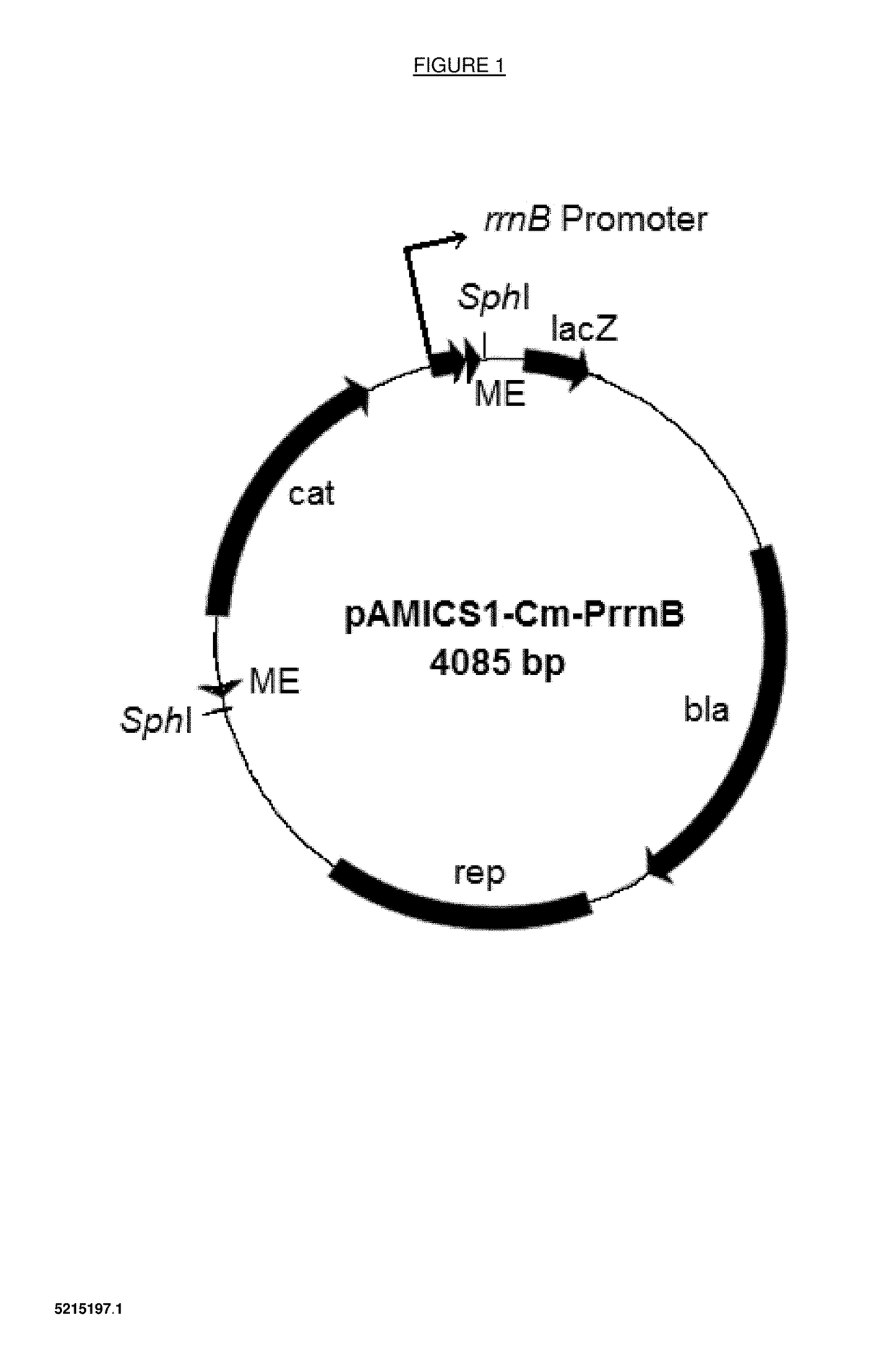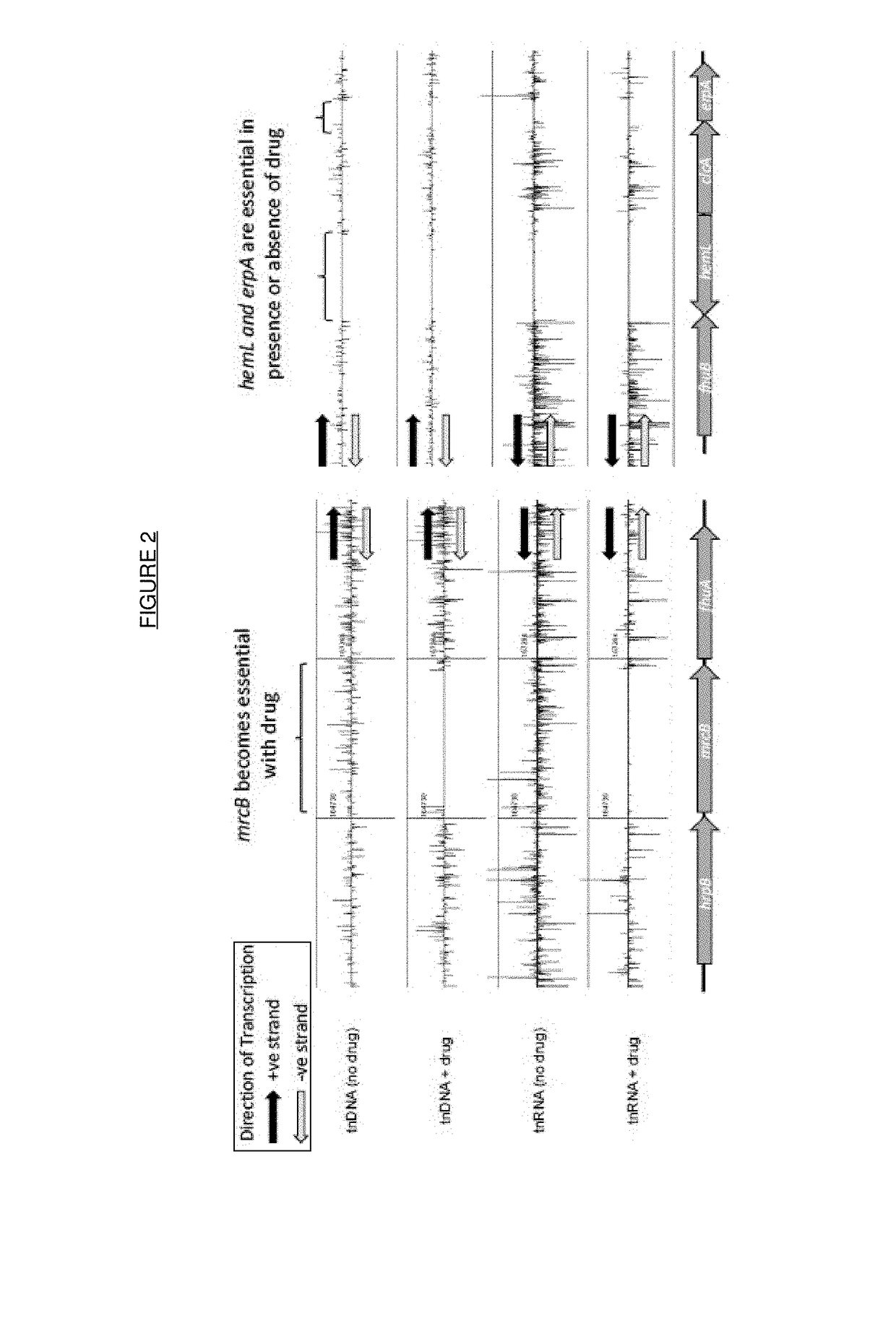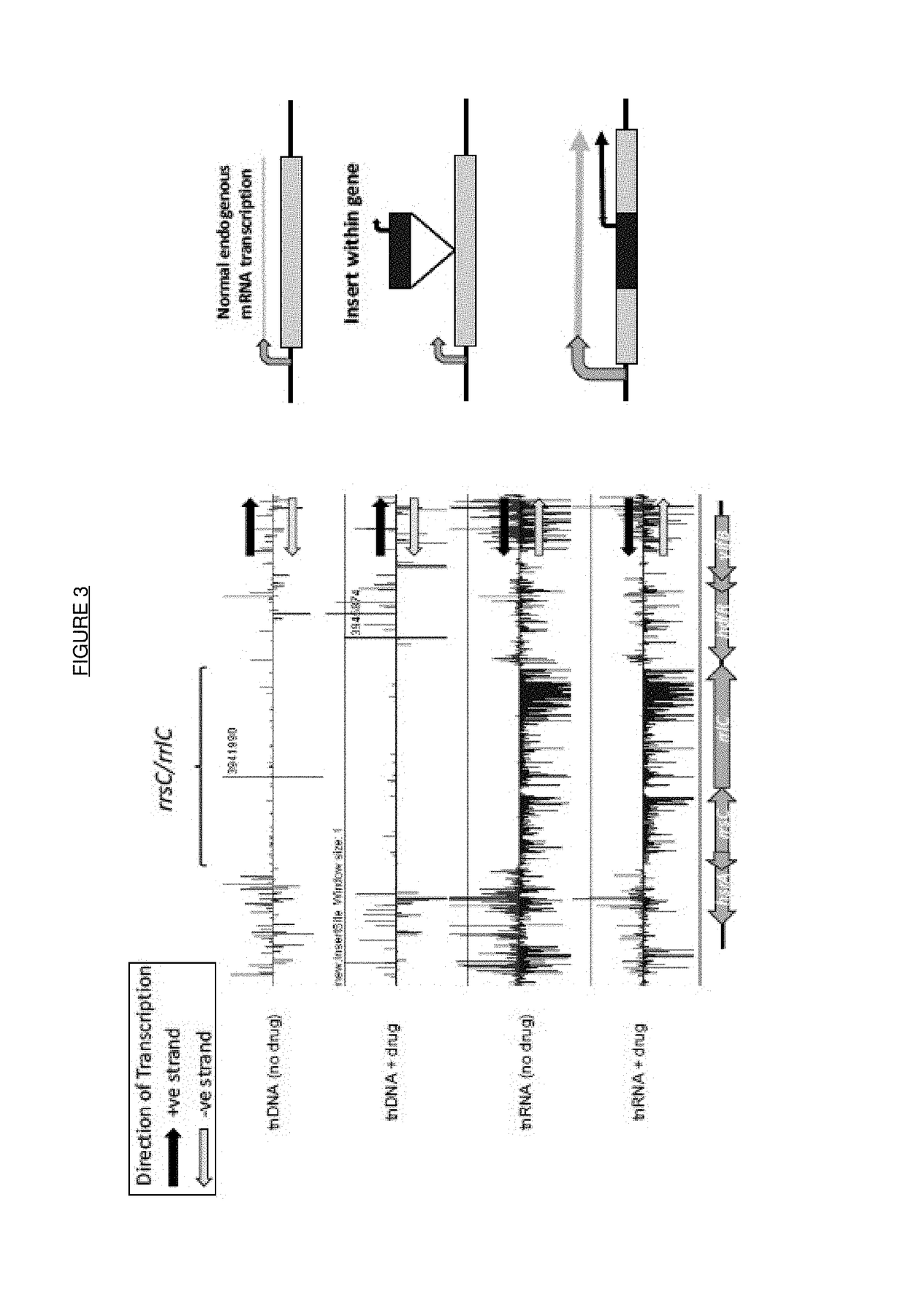Process for producing bacterial mutants
a technology of bacterial cells and mutants, applied in the field of engineering bacterial cells, can solve the problems of inability to optimize biotechnological use of natural occurring bacterial strains, disadvantage, and high cost of metabolically expensive, and achieve the effect of improving survival
- Summary
- Abstract
- Description
- Claims
- Application Information
AI Technical Summary
Benefits of technology
Problems solved by technology
Method used
Image
Examples
example 1
n of Mutant Bacteria which Exhibit Improved Survival and / or Growth in the Presence of Fosfomycin
[0142](i) Construction of Activating Transposon (TnA)
[0143]Plasmids were constructed which incorporate amplifiable nucleotide sequences which act as transposons. The elements of the transposon include the 19 bp mosaic ends which are recognised by a specific transposase enzyme and delimit the transposon, an antibiotic-resistance gene to select for transformants that have resulted from transposition, and an outward oriented promoter at one end of the transposon to activate expression of target genes adjacent to the transposon insertion site.
[0144]Alternative plasmids have been constructed with different outward oriented promoters from different genes from E. coli, Acinetobacter, or Pseudomonas. Table 1 provides details of the different promoters used. In addition, different host species bacteria require different antibiotic resistance genes to select for transformants, e.g. chloramphenicol ...
example 2
n of Mutant Bacteria which Exhibit Improved Survival and / or Growth at Low pH
[0163]The ability of bacteria to grow in acid conditions is of direct use for the biotechnology industry. The E. coli transposon library as described in Example 1 is also used for this example as the mutant pools
[0164]Mutant pools of bacteria are grown in laboratory media at increasingly low pH. The pH of the media is manipulated by altering the ratio of hydrogen phosphates as the buffering system. Typically, this is performed in 10 ml broth cultures to which 108 individual bacterial transposon mutants are added. In the experiment several cultures are grown in media with a different buffered pH. For example, cultures at pH 6, 5, 4 and 3.5 (normal pH range for E. coli K12 is pH 4.5 (J. Bacteriol. March 1994 vol. 176 no. 6 1729-1737) may be performed. Experiments with transposon mutant pools harbouring transposons with the differing promoters (tac, rpIJ or rrnB) may be performed in a single pool, or more cultu...
example 3
ation of Essential Genes / Genes Becoming Essential on Ceftriaxone Exposure
[0166]Libraries of transposon mutants in bacteria were generated as described above to produce at least 3 libraries with different strength outward facing promoters. These libraries were then pooled to ensure equal spread of the mutations and grown in the presence of ceftriaxone at 2× the MIC at 37° C. in appropriate growth media at a ratio that ensured 100's of copies of each transposon for 16 h.
[0167]The cells were then subcultured by 1:100 dilution into fresh media containing 2×MIC ceftriaxone and then grown into exponential phase (OD600 of 0.4-0.5, usually taking 3-4 hours) at 37° C. At this point 2×0.5 ml of culture was harvested by centrifugation and both total RNA and genomic DNA extraction using RNeasy mini-kit (Qiagen) or Wizard SV genomic DNA kit (Promega).
[0168]DNA was quantified by UV spectrophotometry and 4.5 μg fragmented by sonication on a Covaris M220 and library prepared by end repair and ligat...
PUM
| Property | Measurement | Unit |
|---|---|---|
| optical density | aaaaa | aaaaa |
| optical density | aaaaa | aaaaa |
| volume | aaaaa | aaaaa |
Abstract
Description
Claims
Application Information
 Login to View More
Login to View More - R&D
- Intellectual Property
- Life Sciences
- Materials
- Tech Scout
- Unparalleled Data Quality
- Higher Quality Content
- 60% Fewer Hallucinations
Browse by: Latest US Patents, China's latest patents, Technical Efficacy Thesaurus, Application Domain, Technology Topic, Popular Technical Reports.
© 2025 PatSnap. All rights reserved.Legal|Privacy policy|Modern Slavery Act Transparency Statement|Sitemap|About US| Contact US: help@patsnap.com



